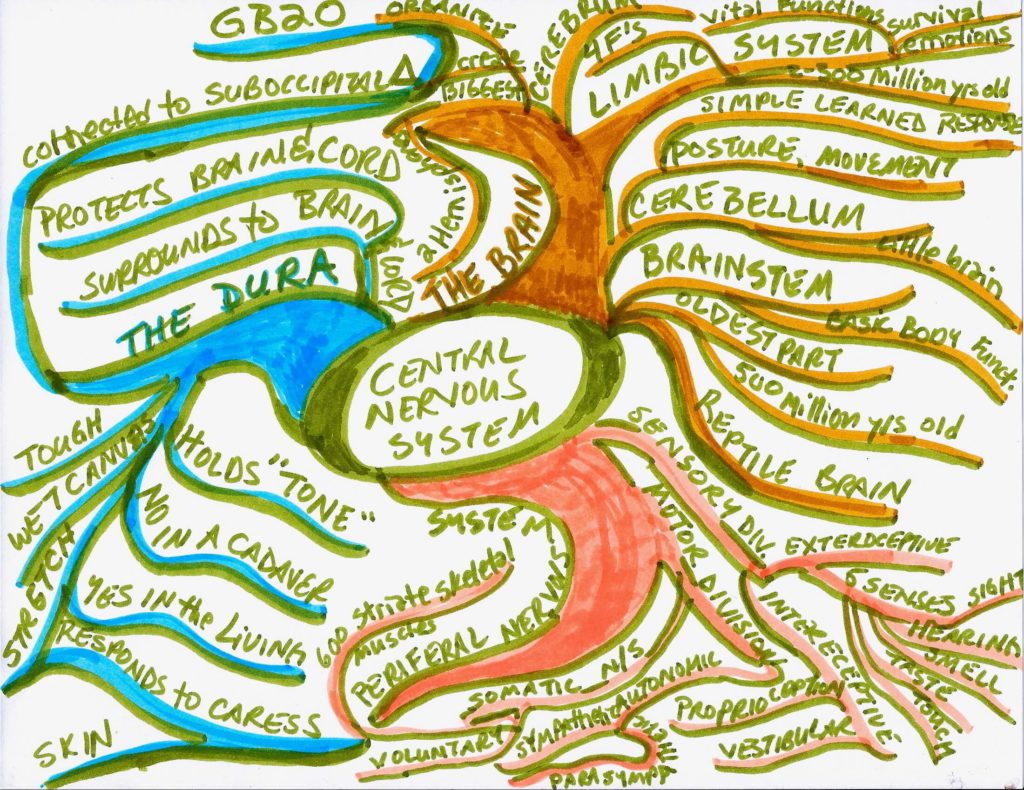We have a map of our body stored in our brain. It’s a map that binds our emotional landscape to our physical real estate, a map of our psycho-proprioceptive self. The body and mind are in constant reciprocity – they communicate back and forth to maintain muscle mass, postural alignment, and appropriate responses to our environment. Embodied autonomy depends on open lines of communication between our brain and the muscles, organs, glands, nerves, bones, and connective tissue that make up the rest of us. Forgotten or suppressed emotions sink deep; they can shut down the link between our body and its mental map.
Tag Archives: chronic pain
Biomechanical stress results from competing strategies to oppose gravity’s pull on our body. If we give in to gravity’s temptation by curling forward, to stay upright we then must compensate by arching our spine backward. This drama plays out along the whole length of the spine – weaving into muscles, connective tissue, and nerves, and distorting our spinal alignment over time. Proper biomechanics means having sufficient flexibility to be comfortable with the movement of weight through our bones. Graceful posture and ease of alignment result from a finely tuned balance between strength, flexibility, and weight distribution.
Scars are a fact of life lived in the body. Healthy scars close wounds, and that’s the end of it. But some scars don’t stop there; they spread three-dimensional web-like structures, emerging from a wound site or surgical incision. These are pathological scars and can form fibrotic shells around muscles and organs, creating rough, raised tissue that tightens over time as it spreads away from original sites of tissue trauma. The effects of scars can go much further – their pull can be felt at quite a distance from old injuries or surgeries. Scars are often at the root of postural distortions.
The surprising truth is that without proper preparation, bodywork is simply not right for everyone right away. There’s often quite a bit of body-based housekeeping to take care of before bodywork becomes an appropriate vehicle to take us where we want to go. Each person has their own particular chores to complete to improve their personal balance of four variables; this is their health equation to solve before bodywork is a viable tool to fulfill any promise of pain relief or personal potentiation.
Accurate proprioception (knowing where you are in space) is a use-it-or-lose-it proposition. Due to scar tissue and inflammatory factors, essential functions of pelvic floor organs and genital tissues can be affected. Scar tissue causes thickening of the extracellular matrix or ECM (the goop between your cells), which reduces blood flow, neural messaging, and sensory integration, eventually interfering with your pelvic proprioceptive literacy. This is a kind of dissociation, an inability to feel parts of your body. The mental representation of pelvic floor muscles, encoded in the sensory motor cortex of the brain, goes dark.
Castor oil is derived from the plant Ricinus communis, with a global history of use reaching deep into our past. This is a story about how I used it to treat genital, vaginal, and abdominal scars. I learned about castor oil and scar tissue at the Shiatsu Massage School of California in the late 1990s. I was beginning to think about how to help women suffering from sexual pain after perineal tears, episiotomies, C-sections, and other injuries after giving birth.






